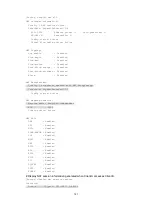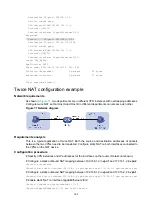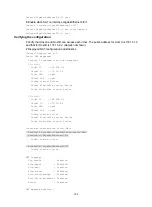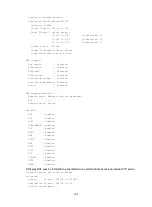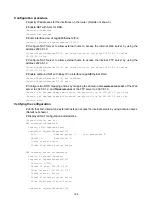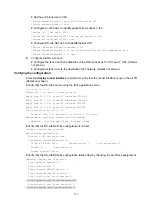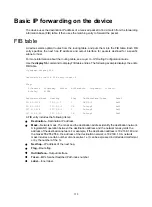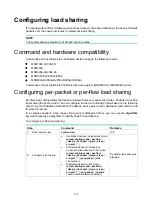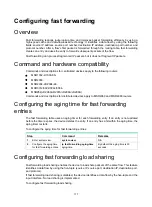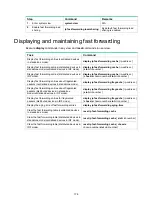
173
Basic IP forwarding on the device
The device uses the destination IP address of a received packet to find a match from the forwarding
information base (FIB) table. It then uses the matching entry to forward the packet.
FIB table
A device selects optimal routes from the routing table, and puts them into the FIB table. Each FIB
entry specifies the next hop IP address and output interface for packets destined for a specific
subnet or host.
For more information about the routing table, see
Layer 3—IP Routing Configuration Guide
.
Use the
display
fib
command to display FIB table entries. The following example displays the entire
FIB table.
<Sysname> display fib
Destination count: 4 FIB entry count: 4
Flag:
U:Useable G:Gateway H:Host B:Blackhole D:Dynamic S:Static
R:Relay F:FRR
Destination/Mask Nexthop Flag OutInterface/Token Label
10.2.0.0/16 10.2.1.1 U GE2/0/1 Null
10.2.1.1/32 127.0.0.1 UH InLoop0 Null
127.0.0.0/8 127.0.0.1 U InLoop0 Null
127.0.0.1/32 127.0.0.1 UH InLoop0 Null
A FIB entry includes the following items:
•
Destination
—Destination IP address.
•
Mask
—Network mask. The mask and the destination address identify the destination network.
A logical AND operation between the destination address and the network mask yields the
address of the destination network. For example, if the destination address is 192.168.1.40 and
the mask 255.255.255.0, the address of the destination network is 192.168.1.0. A network
mask includes a certain number of consecutive 1s. It can be expressed in dotted decimal format
or by the number of the 1s.
•
Nexthop
—IP address of the next hop.
•
Flag
—Route flag.
•
OutInterface
—Output interface.
•
Token
—MPLS Label Switched Path index number.
•
Label
—Inner label.



